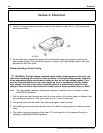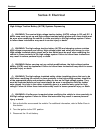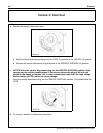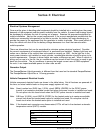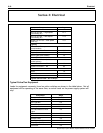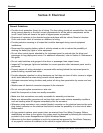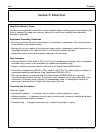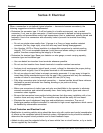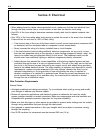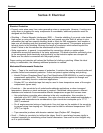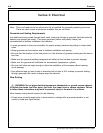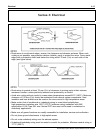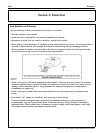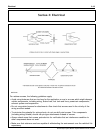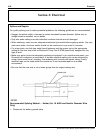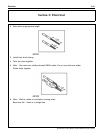
2-14 Electrical
Section 2: Electrical
• When adding loads to a base vehicle-protected circuit, make sure that the total electrical load
through the base vehicle fuse or circuit breaker is less than the device’s load rating.
• Use 80% of the fuse rating to determine maximum steady state load to reduce nuisance fuse
failures.
• Use 135% of the fuse rating when sizing wiring to protect the circuit in the event of an overload.
Fuses will last for one hour at 135% of their rating.
— Total current draw is the sum of the base vehicle’s circuit current requirement (measured with
an ammeter) and the anticipated add-on component current requirements.
— Never increase the rating of a factory installed fuse or circuit breaker.
— If the total electrical load including additional electrical components, on any circuit, is less
than the fuse protection rating or the capacity of some limiting component (switch, relay), the
items to be added can be connected directly to that circuit. The headlamp switch circuits
should never have additional lighting or electrical components directly connected.
— Added devices that exceed the current capabilities of the factory-installed system are best
controlled through the use of a relay or separate switch. The coil of the relay can be fed from
the circuit in the factory harness (now acting as a signal circuit) with added wiring providing
feeds to the added electrical device. The relay selection is important and depends on current
requirements, number of cycles expected in the relay lifetime, whether the relay is to be
operated intermittently or for long periods of time and whether the relay is exposed to
weather conditions or is installed in a protected area. When the current requirements of a
circuit exceed the capacity of an available relay, the load should be reduced or divided
through the use of additional relays.
Wire Protection Requirements
General Notes:
• Anticipate problems and design accordingly. Try to anticipate what could go wrong and modify
your designs to address any adverse impact.
• Review all connector applications and electrical systems to determine the need for solder,
grease, weather-resistant or sealed connectors. Make sure components and wire insulation are
compatible with greased connectors (important for long-term durability).
• Make sure that drip loops or other means are provided to prevent water leakage into the vehicle
through wiring assemblies that pass through the dash panel.
• Use greased or sealed connectors in floor pan troughs which are subject to moisture coming
through the carpeting.
• Use XLPE insulation for uncovered runs that exceed 305 mm (12 in).
2010 Escape Hybrid, Mariner Hybrid Modifiers Guide, 07/2009



